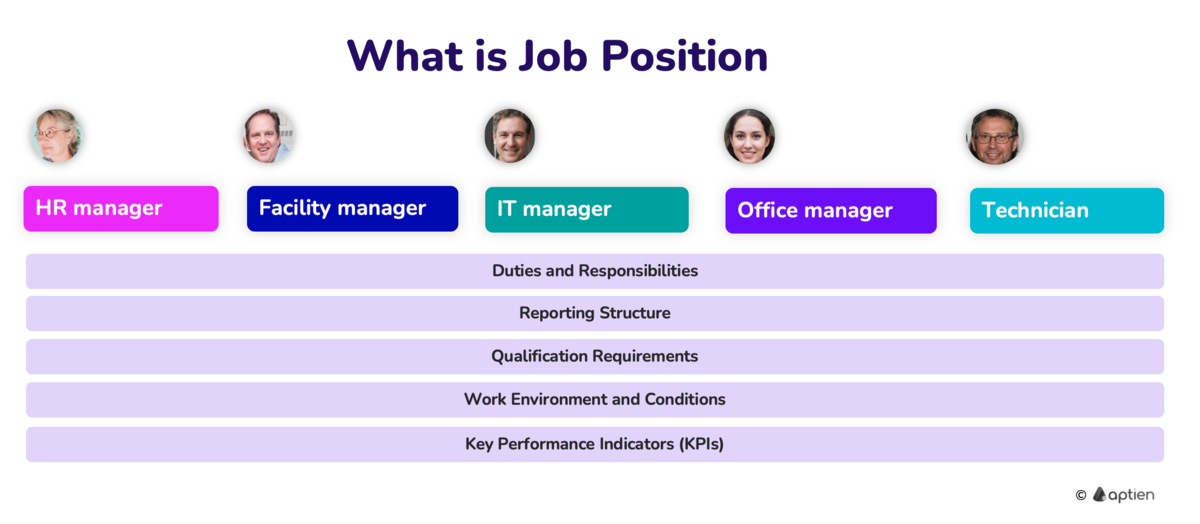Job Position Explained Simply
- A specific position within a company, filled by one particular employee.
- Exact seat in the org chart
How to Manage Job Positions in Small, Medium, and Growing Businesses
Job position (or just Position) refers to a specific role within an organizational structure that is occupied by a particular individual. A job position clarifies the role for a specific person and situation. It defines their exact responsibilities within the company, including their duties, authority, and place in the company’s hierarchy. It also outlines the qualifications required—what the person needs to know, be able to do, or the tools and equipment they should have. A job position is tied to a specific work location.
- An employee joins the organization in a specific job position, which is stated in their employment contract.
- Therefore, the job position is an important concept in the employee-employer legal relationship.
Managing Job Positions in Small Businesses (5-20 employees)
- Small businesses typically don’t require detailed planning or advanced job position management to track how many open positions are planned.
- They usually keep all necessary information in employee records.
- They maintain individual job descriptions, training checklists, and equipment lists tailored to each employee.
- Assigning a person to a job position is usually sufficient for their needs.
Advanced Job Position Management in Medium-Sized Businesses (50+ employees)
- Advanced job position management may be needed to plan headcount and track position occupancy (how many “slots” need to be filled), manage budgets for each position, or implement approval workflows when opening new positions.
- Managing job positions means treating each position as a separate record with its own identity, budget, occupancy status, and open/close dates.
What Information Should Be Tracked for a Job Position?
Information about a job position is based on the job description and is tied to a specific employee. This information is managed directly on the employee profile page. Job position information is a combination of details about the individual employee and the role they perform. These details include:
- Direct Manager: Clear identification of the employee’s immediate supervisor and organizational reporting structure.
- Work Location: Where and how the employee performs their job.
- Training and Certifications: Records of training sessions and certifications the employee has completed.
- Issued Equipment: Company assets assigned to the employee.
- Onboarding Activities: List of trainings and tasks during the employee’s onboarding and orientation period.
- Performance Reviews and Goals: Specific goals and performance evaluations related to the employee’s role.
- Start Date and End Date of Employment in the Role
How Aptien Helps Manage Job Positions
You can find information about job roles on the employee profile under the tabs "Job Assignment," "Activity Plans," and "Issued Work Equipment."
- Open the employee directory
- Select the specific employee and open their digital profile
- Go to the "Job Assignment," "Activity Plans," or "Issued Work Equipment" tab
Check out the guide on how to assign an employee to a job position

